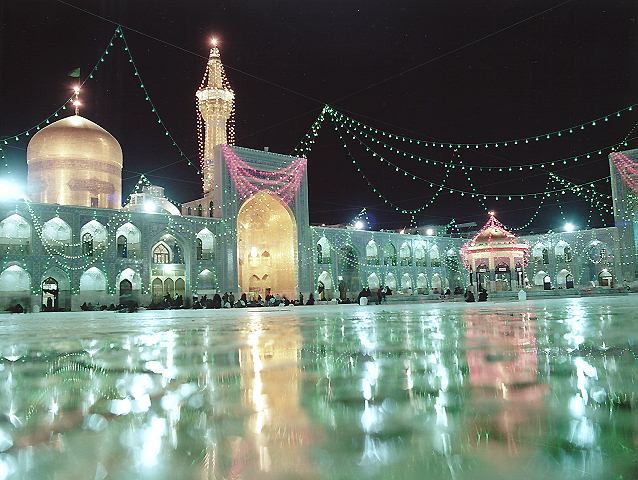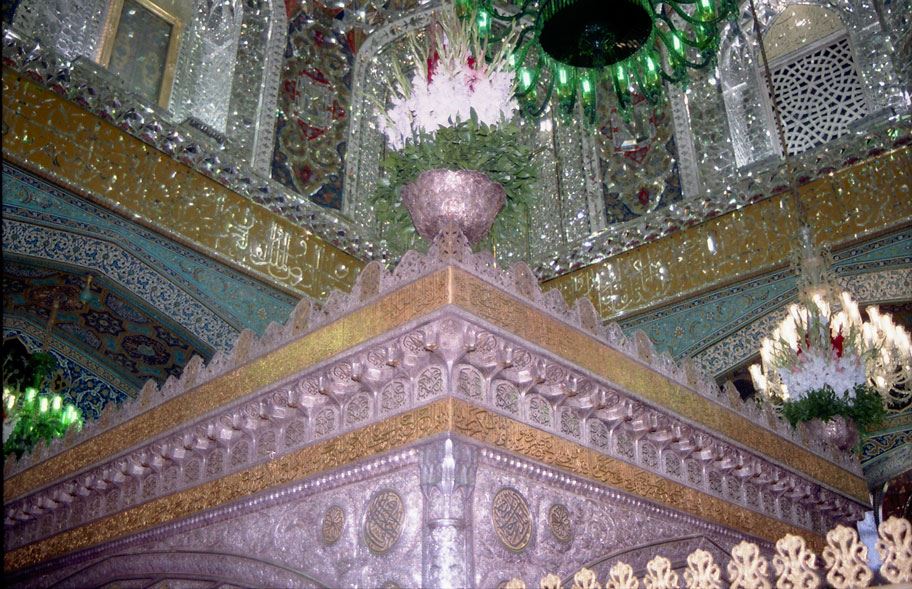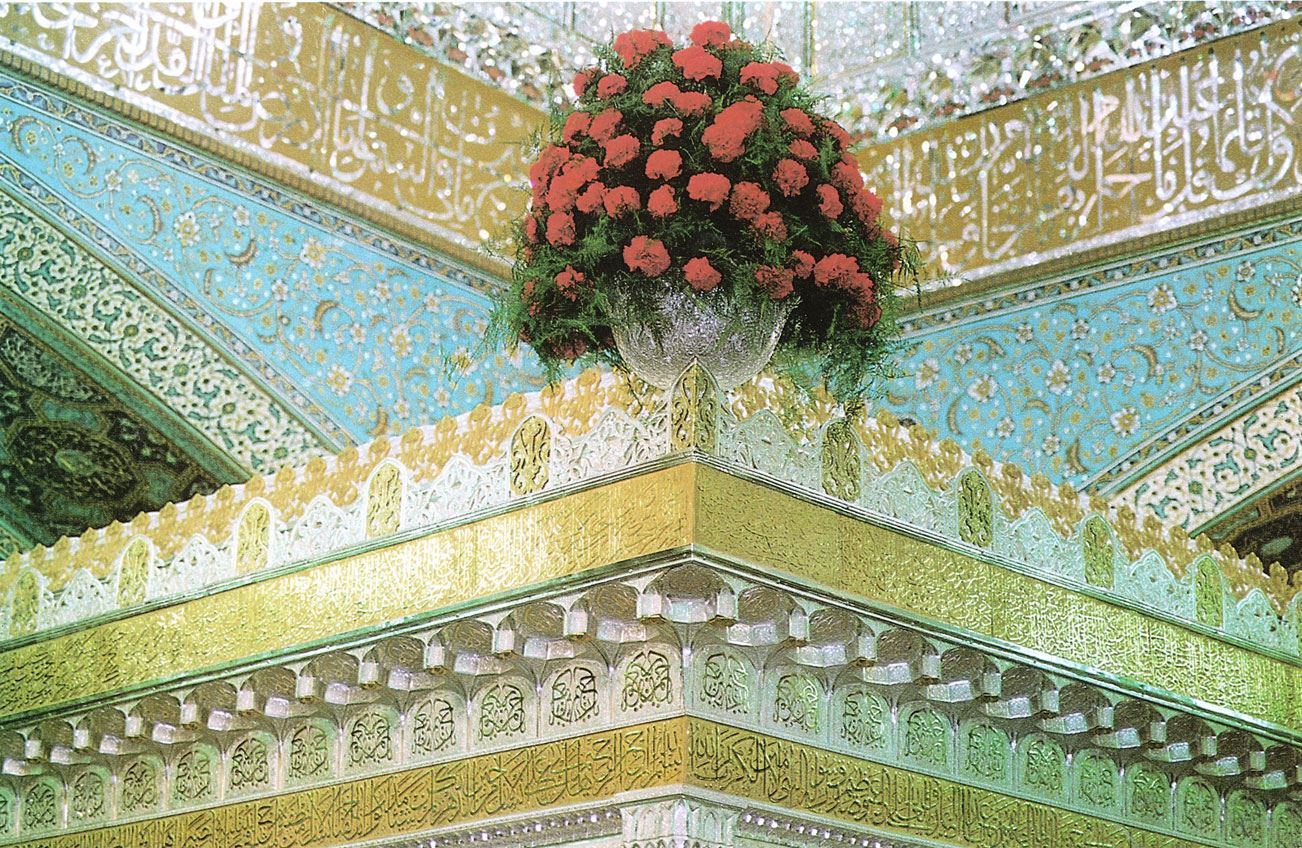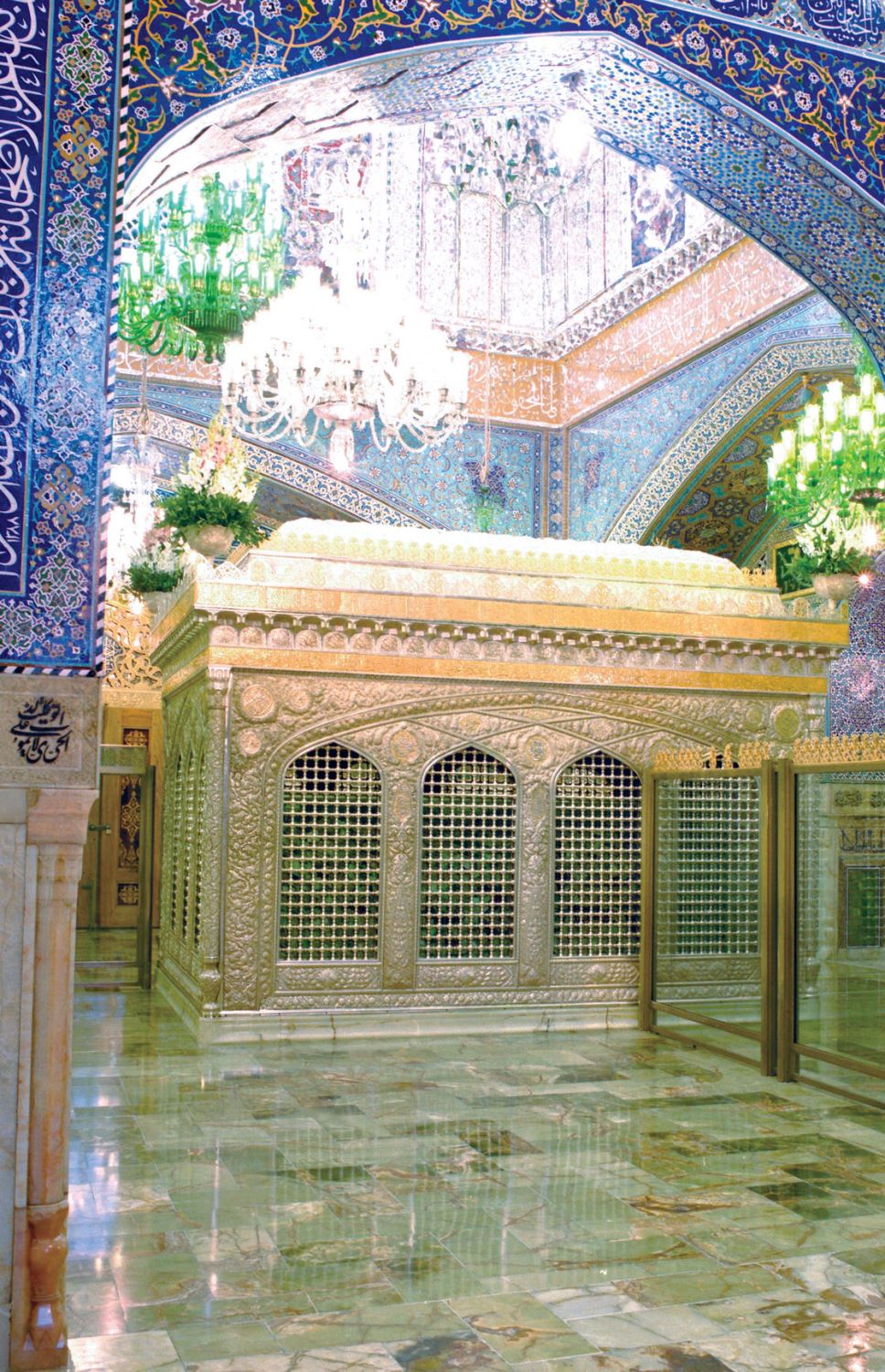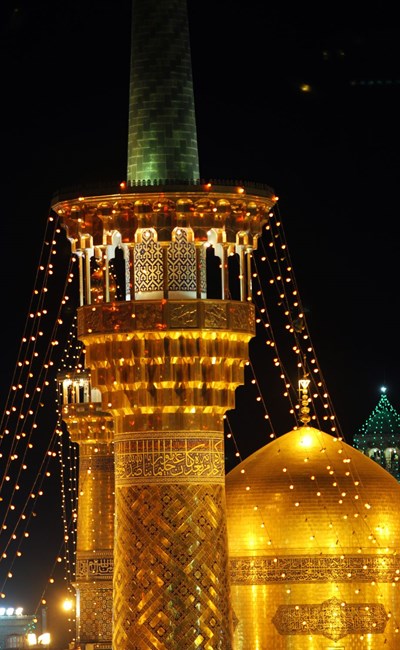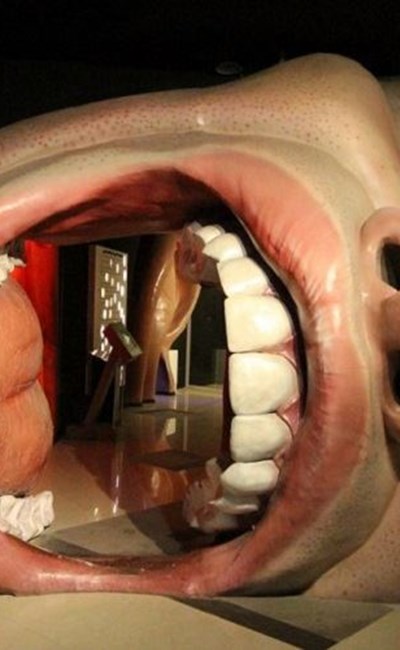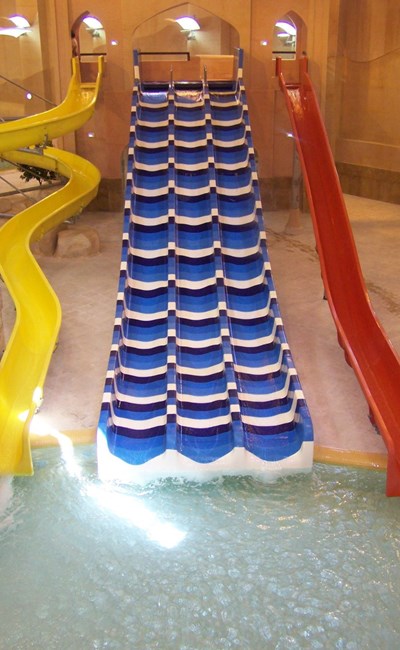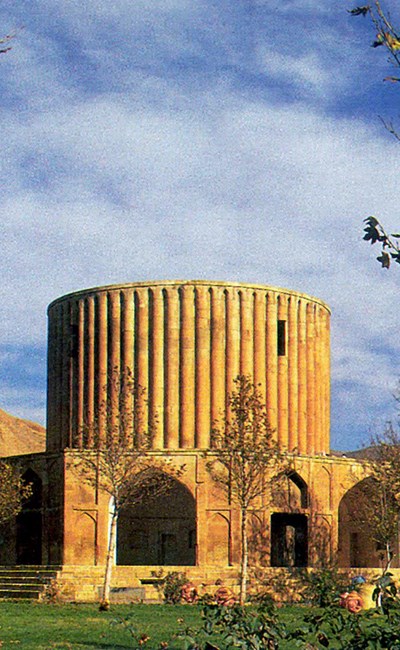Imam Reza shrine
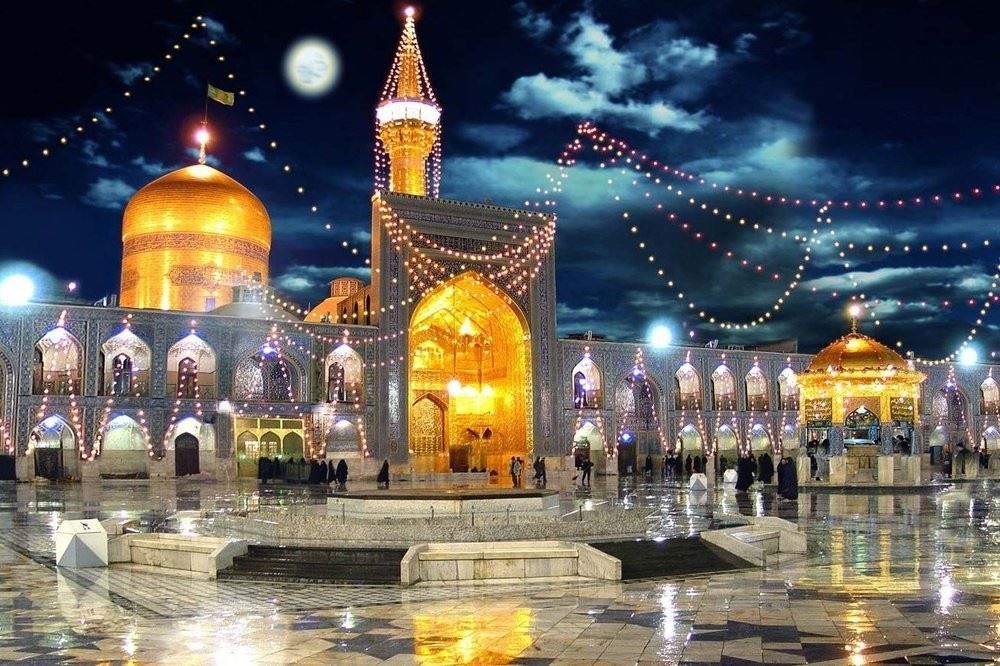
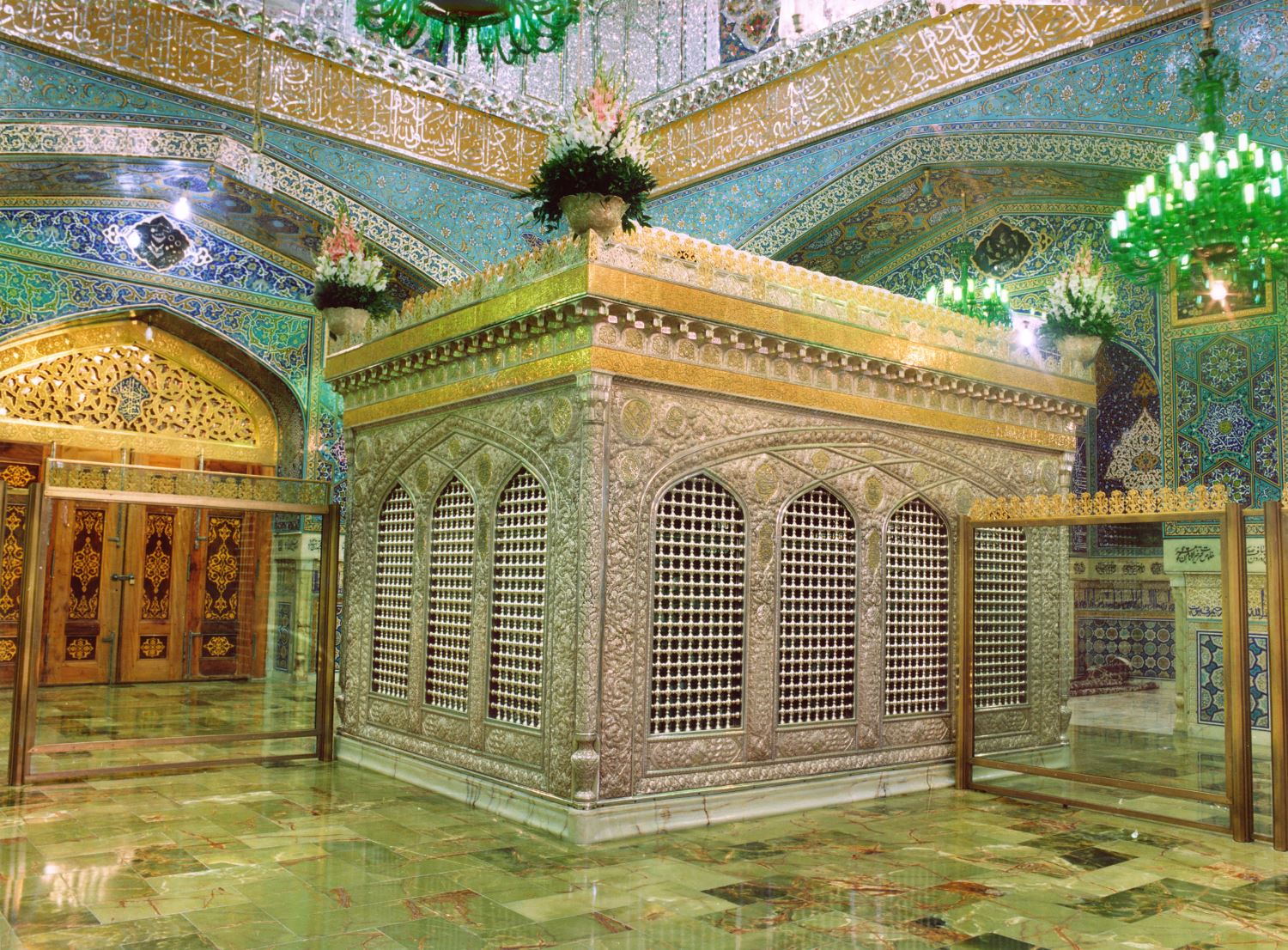
The Imam Reza shrine in Mashhad, Iran is a complex which contains the mausoleum of Imam Reza, the eighth Imam of Twelver Shiites. It is the largest mosque in the world by area. Also contained within the complex are the Goharshad Mosque, a museum, a library, four seminaries, a cemetery, the Razavi University of Islamic Sciences, a dining hall for pilgrims, vast prayer halls, and other buildings.
The complex is one of the tourism centers in Iran and has been described as "the heart of the Shia Iran" with 12 million Iranian and non-Iranian Shias visiting the shrine each year, according to a 2007 estimate.The complex is managed by Astan Quds Razavi Foundation currently headed by a prominent Iranian cleric, Seyyed Ebrahim Raisi..]
The shrine itself covers an area of 267,079m2 while the seven courtyards which surround it cover an area of 331,578m2 - totaling 598,657 m2 (6,443,890 sq ft).
Every year the ceremony of Dust Clearing is celebrated in the Imam Reza shrine.
Shia sources quote several hadiths from the Shia Imams and Prophet Muhammad that highlight the importance of pilgrimage to the shrine. A hadith from the Islamic Prophet reads:
One of my own flesh and blood will be buried in the land of Khorasan. God the Highest will surely remove the sorrows of any sorrowful person who goes on pilgrimage to his shrine. God will surely forgive the sins of any sinful person who goes on pilgrimage to his shrine.
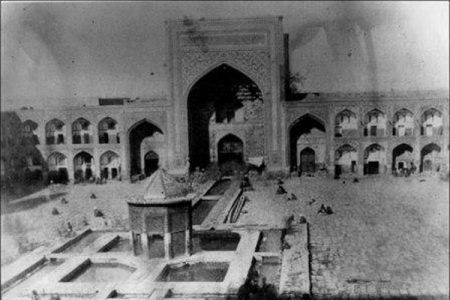
History
Early years
Dar-ul-Imarah (Royal Residence) or the garden of Humayd ibn Qahtaba al-Ta'i was a fortress in the village of Sanabad. It dates back to the era before the Islam religion. It had been placed at the fork road of Sanabad, Neishabour, Sarakhs, Toos and Radkan. In fact, this fortress has been a place for the frontier guards to take position and establish the security of these roads and regions. After the demise of Harun al-Rashid, he was buried in this place. Due to this historical event, the Dar-ul-Imarah was known as the Mausoleum of Haruniyyeh. The original inner building of Dar-ul-Imarah has been in fact a temple used by the Zoroastrians to worship. This building was demolished by the order of al-Ma'mun, and then it was reconstructed according to the special architecture of Khorasan. Four plain and short walls, covered with a low-slope dome, were constructed around the building. Afterwards, the name of the mausoleum (Haruniyyeh) was changed and known as the Mashhad-ur-Reza, due to the Holy Imam. Mashhad literally means a place where a martyr has been buried.
development
In 818, Imam Ali al-Ridha was murdered by the Abbasid caliph al-Ma'mun (ruled 813–833) and was buried beside the grave of al-Ma'mun's father, Harun al-Rashid (r. 786–809).[10] After this event, the location was called as Mashhad al-Ridha ("the place of martyrdom of al-Ridha"). Shias and Sunnis began visiting his grave on pilgrimage. By the end of the 9th century a dome was built on the grave and many buildings and bazaars sprang up around it. For the next thousand years, it has been devastated and reconstructed several times.
The celebrated Muslim traveler Ibn Battuta visited Mashhad in 1333 and reported that it was a large town with abundant fruit trees, streams and mills. A great dome of elegant construction surmounts the noble mausoleum, the walls being decorated with colored tiles. Opposite the tomb of the Imam is the tomb of Caliph Harun al-Rashid, which is surmounted by a platform bearing chandeliers.[2] However, the tomb of Harun al-Rashid is not considered sacred, as he was responsible for the murders of the 6th and 7th Shia Imams.
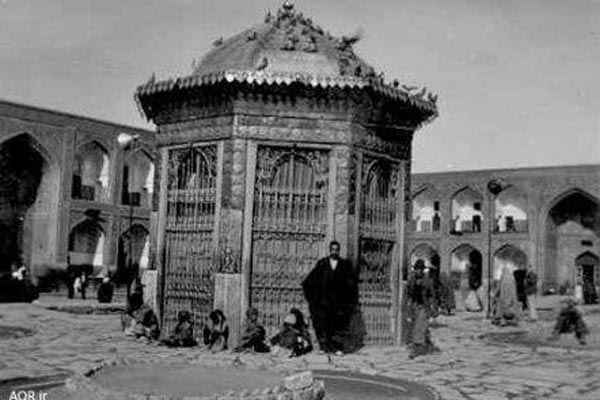
Ghaznevid era
By the end of the third Hijri century, a dome was built on the grave of Imam Reza and many buildings and bazaars sprang around the holy shrine. In 383 A.H. / 993 A.D., Sebuktigin, the Ghaznevid sultan devastated Mashhad and stopped the pilgrims from visiting the holy shrine of Imam Reza. But in 400 A.H./ 1009 A.D., Mahmud of Ghazni (born 971, ruled, 998-1030 A.D.,) started the expansion and renovation of the holy shrine and built many fortifications around the city.[12]
Saljug era
Sultan Sanjar (b. 1086 A.D., r. 1097-1157 A.D.), after the miraculous healing of his son in the holy shrine of Imam Reza, renovated the sanctuary and added new buildings within its precincts. At the time of Sultan Sanjar Saljuqi, after Sharaf al-Din Abu Tahir b. Sa'd b. Ali Qummi repaired the shrine, he began to construct a dome over it.[13] In 612 A.H./ 1215 A.D., as borne out by inscriptions on certain tiles, Allaudin Khwarezm Shah carried out renovations on the shrine.[13]
Mongol invasion
During Khwarazm-Shahs period, Razavi Shrine was paid much attention and some repairment and decoration were made in it.[13] In this era(612/1215), two very glorious embossed Thuluth (a large Naskh handwriting) inscriptions in form of square tile work were fixed on both sides of the shrine entrance-by the side of Dar al-Huffaz porch—in which the names and descent of Imam Reza back to Imam Ali were written. Some other inscriptions and three mihrabs (a special place for prayer-leader in mosques) belonging to this age exist in this holy complex. During the Mongol invasion in 1220 AD (617 A.H.), Khorasan was plundered by the invading hordes and the survivors of this massacre took refuge in Mashhad and settled around the holy shrine.[14] Sultan Muhammad Khudabandeh Iljaitu (b. 1282 AD), the Mongol ruler of Iran, converted to Shi'ism and ruled Iran in 703–716 A.H (1304–1316 AD), once again renovated the holy shrine on a grand scale.
Timurid era
The glorious phase of Mashhad started during the reign of Shahrukh Mirza (b. 1377 A.D., r, 1405-1447) son of Tamerlane and reached its zenith during the reign of Safavid kings who ruled Iran from 1501-1786 A.D. Shahrukh Mirza, whose capital was Herat, regularly visited Mashhad for the pilgrimage of the holy shrine of Imam Reza (A.S.). In the 15th century, during the reign of the Timurid Shahrukh Mirza, Masshad became one of the main cities of the realm. In 1418, his wife Empress Goharshad funded the construction of an outstanding mosque beside the shrine, which is known as the Goharshad Mosque.
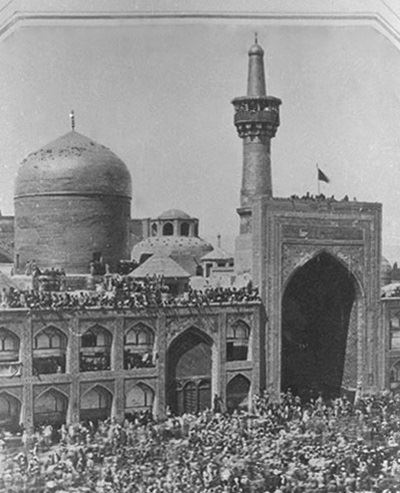
Safavid era
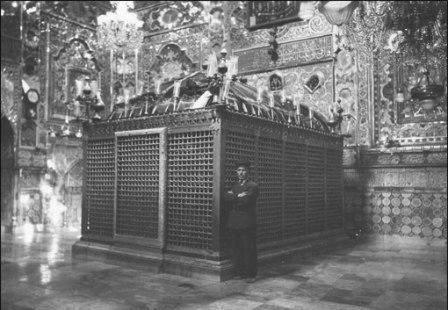
Afsharid and Qajar era
